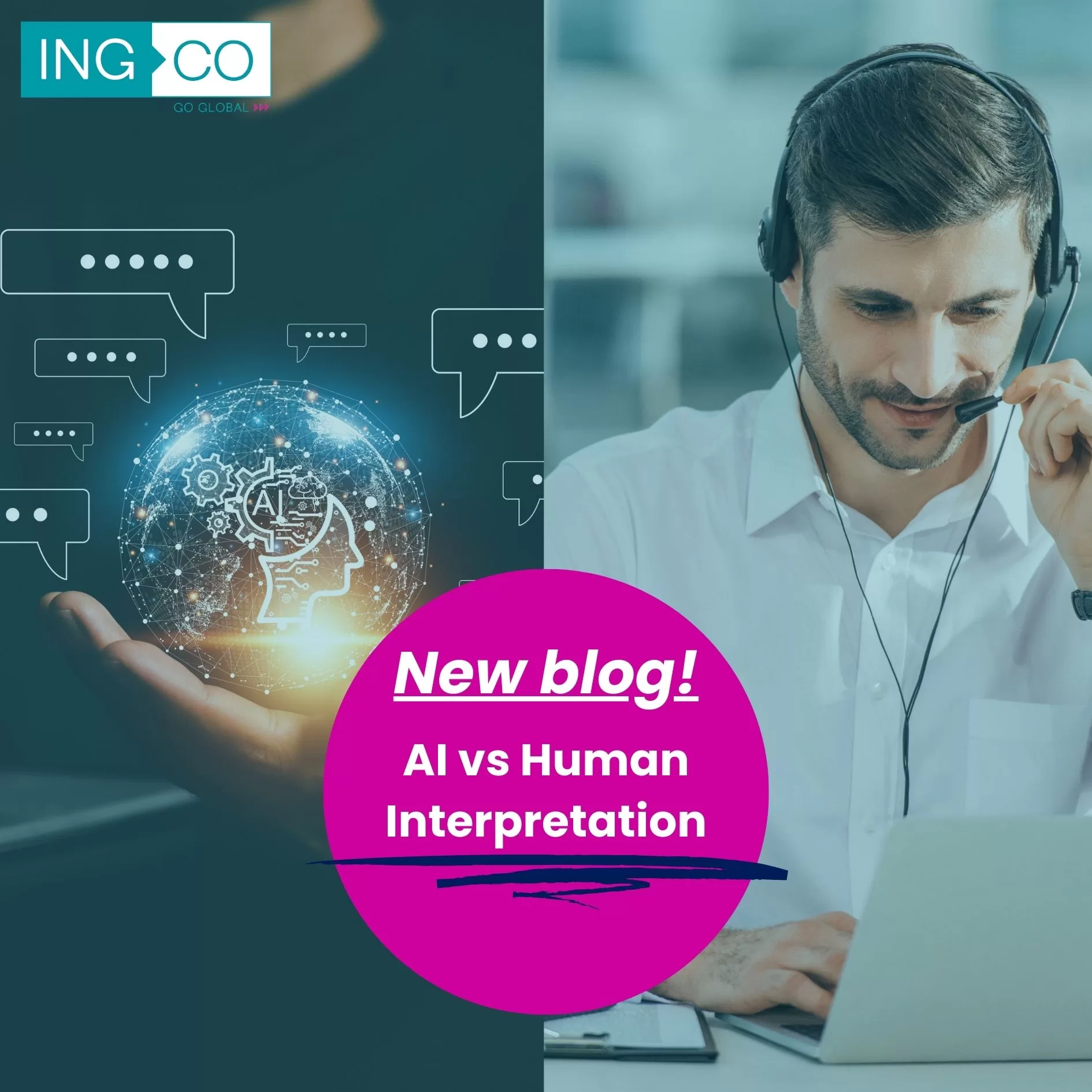
The need for effective communication across languages and cultures has skyrocketed in today’s interconnected world. That’s where interpreting steps in, playing a vital role in guiding, understanding, and bridging linguistic gaps. However, with the rise of artificial intelligence (AI), the concept of human vs AI interpreting has gained significant relevance.
The emergence of AI interpreting has revolutionized the language services industry, claiming to offer faster and more scalable language service solutions. However, while AI has undeniable strengths, human interpreters bring unique skills and capabilities equally valuable in facilitating understanding between diverse cultures. While AI boasts speed and efficiency, human interpreters bring invaluable cultural nuances, accuracy, empathy, and adaptability to complex situations.
This dynamic interplay between human and AI interpreting is shaping the landscape of global communication like never before.
The rise of AI interpreting
AI interpreting has witnessed remarkable advancements thanks to breakthroughs in artificial intelligence and machine learning. With the ability to swiftly analyze and translate spoken or written words in real-time, AI systems offer –occasional– speed, scalability, accessibility, and –sometimes– cost-effectiveness through 24/7 availability. It has become a valuable tool for virtual meetings, short events, and presentations that do not require participation.
The strengths of human interpreting
While AI interpreting has its merits, human interpreters bring invaluable skills and capabilities to the table. Human interpreting is beyond words. Interpreters excel at capturing cultural nuances, understanding context, and providing subjective interpretations that go beyond mere straight word-for-word translation.
Human interpreters are like chameleons, seamlessly adapting to challenging situations and molding their delivery to mirror a speaker’s emotions, tones, and body language. The result? Personalized experiences that foster trust and understanding between individuals, building positive rapport.
Numerous anecdotes and case studies demonstrate how human interpreters navigate complex scenarios, diffuse tension, and bridge cultural gaps, ultimately facilitating effective communication.
Limitations of AI interpreting: debunking myths
As AI interpreting accelerates, some misconceptions must be debunked.
Contrary to popular belief, AI isn’t always cheaper or less complicated than human interpreting agencies. People often find comfort in traditional methods and may require assistance with new technology, like AI. Also, using humans is not always “complicated,” only during complex projects, in which AI would be “complicated,” too.
Plus, the idea that AI is always the more affordable option is contradictory, as professional language service providers frequently offer quicker, more cost-effective solutions.
It is also important to note that as for spoken languages, AI solutions do experience speech delays, which goes against the assumption that it’s faster and more efficient. This is especially common where unusual speech patterns, cultural references, etc. are present. The turnaround times are not always the greatest, also.
Biases, privacy concerns, and accuracy issues
AI interpreting is not immune to biases and privacy concerns, nor can it replicate human interpreters’ ethical judgment and empathetic touch. Accuracy issues arise when AI grapples with slang, dialects, and unusual speech patterns. Understanding context remains a challenge, as AI struggles to interpret idioms, metaphors, or culturally specific references.
Artificial intelligence cannot:
- Serve as a tool in a debate or conversation where the essence is to convince each other, discuss, and come to conclusions.
- Be subjective, like all humans are. Human interpreting is beyond words. Meaning is much more than words.
- Be completely accurate, mostly in rare and super rare languages.
Consequently, relying solely on AI interpreting risks overlooking crucial aspects of effective communication.
The future of interpreting: Will AI replace interpreters?
The future of interpreting hinges on finding an equilibrium between human and AI technologies. While AI interpreting continues to thrive, human interpreters are far from obsolete. Instead, they form a symbiotic relationship with AI, harnessing its scalability and accessibility while infusing their expertise in cultural understanding, emotional intelligence, and context sensitivity.
Continuous training and adaptation will be crucial for human interpreters to thrive, expanding their skill sets to complement evolving technologies. The real magic lies in striking a perfect balance between human and AI interpreting, maximizing both strengths to promote truly inclusive and efficient communication across languages and cultures.
Conclusion
The rise of AI interpreting has undoubtedly transformed the field of language services, offering occasional speed and scalability – increasing language accessibility. However, it is vital to recognize the unique strengths of human interpreters, who excel in understanding cultural nuances and context and providing subjective interpretations.
Striking the right balance between AI and human interpreting is essential to ensure effective communication in our interconnected world.
In this revolution of language services, the future holds an enticing promise – an empowering harmony of human and AI interpreters, standing united in their mission to foster meaningful connections across borders. By cherishing the skills and expertise of human interpreters and optimizing AI technology, we cultivate a world where linguistic boundaries are something of the past.
